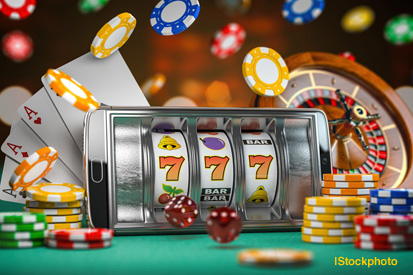When it comes to slot machines, players often become enthralled by the flashing lights, intriguing themes, and the adrenaline of spinning the reels. But behind the glamour and excitement lies an essential concept that all players must grasp: Return to Player, or RTP. This key metric plays a significant role in determining the amount of money you can expect to receive back over time, shaping your experience and strategy as you play.
RTP is usually expressed as a percentage and reflects the typical sum of money returned to players compared to the cumulative wagers. For instance, if a slot game has an RTP of 95 percent, it means that, on average terms, players can expect to get back $95 for every $100 they stake. Understanding this concept can help players make informed decisions when deciding on slots to spin, ultimately enhancing their gaming experience at the casino.
What is the meaning of RTP?
Return to Player, often called RTP, refers to an important element in the realm of casino slots games. It indicates the fraction of all wagered money that a specific slot is designed to refund to players through its operation. For example, if a specific slot has an RTP of 95, this means that, theoretically, players are likely to get back $95 for every 100 dollars placed over time. Knowing RTP aids players analyze the likely profitability of various slot games.
RTP is not a promise of personal wins but instead a average calculated over many spins. Individual players’ experience may differ significantly because of the randomness inherent in the games. A better RTP suggests more favorable odds for the player, making it an essential aspect to take into account while selecting the slots to play. However, even with a high RTP, there can be stretches where players encounter losses, as luck plays a significant role.
It is important to note that various slots have diverse RTP percentages. Some slots may have a lower RTP due to a significant entertainment or distinct elements, while others maintain a increased percentage to draw in more conservative players. Recognizing RTP enables players to take wise choices about their gaming strategies and control their funds efficiently while relishing the excitement of casino slot games.
How RTP is Calculated
The Return to Player, or RTP, represents a critical indicator within the world pertaining to gambling slot machine titles. It indicates the proportion of total wagered money that a gaming device can be expected to return to gamblers in the long run. Understanding the method by which RTP is calculated requires insight of the dual aspects of the slot’s design and its payout system. This return value is calculated through complex algorithms and data evaluation executed during the slot machine creation phase. Slot creators consider various elements, which include the rate of winning outcomes as well as the size for returns on each combination.
In order to compute RTP, developers simulate a significant number in terms of rotations on the game. Such simulations aid determine the average amount that on average, a gambler is likely to earn based on their wagers. For instance, when a machine has an average return of 95 percent, this means that, theoretically, for every one hundred bet, gamblers can expect to get ninety-five dollars in return in the long term. That value does not indicate how much a gambler might receive during a one session and over a couple of spins; instead, it reflects long-term return projections.
The values of RTP tend to be usually published by the casino or game developer. Gamblers must always look for such data while selecting a slot game, because it can significantly influence their overall enjoyment. A greater RTP typically indicates a better probability of winning back a portion of bets, although specific plays may differ considerably. Understanding RTP can help players to choose wisely and improve their overall enjoyment in the world of slot games.
Significance of RTP in Gaming
Comprehending the Return to Player or RTP is essential for any player involved in casino slots games. RTP refers to the percentage of total bets that a game is designed to return to gamers over the long run. A greater RTP means that gamers can expect receiving a larger portion of their bets back, making it an important factor for those looking to maximize their gaming experience. Knowing this figure helps gamers make informed decisions about which games to play, as it can significantly affect their chances of winning. https://vuabet88i.tech/
Moreover, Return to Player holds a key role in the overall fairness and clarity of casino slots. Gamers are often attracted to slots with greater return rates because they provide a superior opportunity of winning over the duration of gameplay. Casinos and game developers use Return to Player as a marketing tool to attract gamers, guaranteeing they maintain a competitive edge in the booming gaming industry. By being aware of Return to Player, gamers can choose slots that align with their comfort level and objectives.

Finally, the concept of RTP encourages responsible gambling behavior. Recognizing that not all games will provide short-term winnings and that RTP is determined by long-term play, gamers can manage their anticipations and playing habits effectively. This understanding enhances the enjoyment of casino slots while fostering a more balanced gaming environment. Gamers who grasp the importance of Return to Player are likely to have a better experience and lessen the risks of gambling issues.